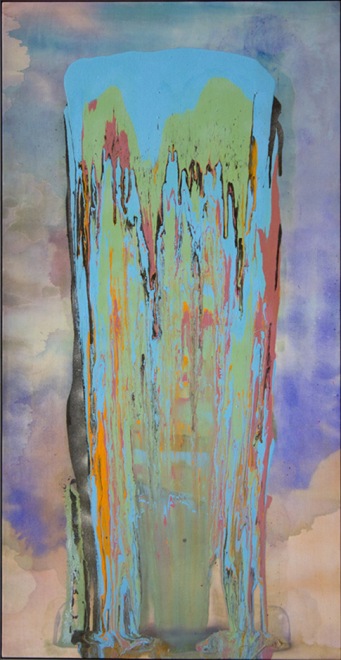Home » Events » Courtney Martin in Conversation with Frank Bowling at the Tate
Courtney Martin in Conversation with Frank Bowling at the Tate
Posted by vrcvanderbilt on Monday, October 1, 2012 in Events, HART, Lectures, VRC.
 Courtney Martin, assistant professor of history of art, has organized an exhibition at the Tate Britain that opened on April 30 and features a series of “poured” paintings that British Guyana-born abstract artist Frank Bowling began in New York in the early 1970s. Martin will travel to London this month to participate in an artist’s talk and conversation with Bowling on October 12 at the Tate Britain.
Courtney Martin, assistant professor of history of art, has organized an exhibition at the Tate Britain that opened on April 30 and features a series of “poured” paintings that British Guyana-born abstract artist Frank Bowling began in New York in the early 1970s. Martin will travel to London this month to participate in an artist’s talk and conversation with Bowling on October 12 at the Tate Britain.
Bowling (born 1936), who studied at the Royal College of Art (1959-1962) with David Hockney and Derek Boshier, began his career as a figurative painter. He encountered the work of American abstract painters when he moved to New York in 1966 because New York, he told The Guardian, was “the frontline of artistic aspiration.” He became increasingly interested in the effects created by paint, and in 1973 he began to pour paint directly onto canvas, angled so that the wet acrylic paint would slowly flow to the bottom.
In his New York and London studios Bowling built a tilting platform that allowed him to pour the paints from heights of up to two meters. “The paint spilled down as if on a ski jump, creating an energetic and innovative action painting style,” said Martin. “The richly layered shifts of color could start as a straight line at the top of the canvas and end in a swirl at the bottom, meeting and meshing with other colors in the middle. A dense configuration of built-up paint settled at the bottom edge.”
Huge fluorescent canvases now (through April 30, 2013) dominate a white-walled room of the Tate, all of them produced in New York in the 1970s, in the space of just five years (1973-1978). Bowling exhibited the first group of these “poured” paintings in New York in the fall of 1973. Over the last thirty years he has developed his painting technique, adding other materials and thick layers of paint to the canvas. “Color and the material structure of the paint remain his primary concerns,” said Martin.
In 2005 Bowling became the first black British artist to be elected to the Royal Academy. He continues to paint every day and is pleased by the recent resurgence of interest in his work: six exhibitions so far this year and Mel Gooding’s monograph on his work recently published by the Royal Academy. Follow this link to see “Julia,” 1975 (top left) and other “poured” paintings by Bowling on display at the Tate Britain.

©2025 Vanderbilt University ·
Site Development: University Web Communications